Need help please. Completely clueless!
Rebeca
4 years ago
last modified: 4 years ago
Featured Answer
Sort by:Oldest
Comments (36)
Rebeca
4 years agoRebeca
4 years agoRelated Discussions
Need help picking plants....completely clueless
Comments (3)Looks to me like that tree in front of your house is a red oak, not a maple, but maybe there's a maple in there somewhere too. The shrubs you have in the front hiding the porch footings are Juniper torulosa (next to the mailbox) and I dunno, something that looks azalea-ish and appears to be doing poorly. I have the torulosa juniper in my yard and I can tell you that they get pretty massive. You can't prune them just any old way or you will ruin their growth and they will languish just like the bush that is on the end of the front of your porch. If it were me, I'd tear out those shrubs because they are planted too close to the house, and it doesn't look like or seem like you're going to want to do a lot of pruning. The middle shrubs appear to have been poorly pruned as it is. Then, try to find a nice nursery that specializes in shrubs, (NOT a big box store) and find someone who can guide you to dwarf shrubs that will stay the size you want without a lot of pruning. Or Google "dwarf shrubs" or "small shrubs" and your garden zone (I think NJ is zone 6, same as me in E. PA), and you will find lots of suggestions. Use the "image" tab to help you decide what you like. Another option, and one I just LOVE, is the Missouri Botanical Garden Web site, http://www.mobot.org/gardeninghelp/plantinfo.shtml. They have TONS of resources on plants, but one great one is a plantfinder database where you can search by characteristics. The database has gads on info on all the plants, how to grow them, what they look like, etc. I honestly don't think you need shrubs to cover up the foundation of your porch. It is nice looking so I wouldn't obsess about covering it with shrubs. My folks had a shady front porch and grew ostrich ferns agains the foundation, followed by lily of the valley. Lily of the valley isn't much to look at after it has bloomed, but it smells heavanly when it does. Don't be intimidated by shade, you have lots of options. One colorful plant that comes to mind is astilbe, which you can find everywhere in nurseries. Another popular plant, due to the foliage, is coral bells. But for color, best to plant annuals. You could put in great big bright begonias, or impatiens, they are the most colorful shade flowers I can think of. Small azalea shrubs are gorgeous when in bloom, but boring otherwise. Like I said, I think that is what you already have in front of your house. If those shrubs bloom in the spring with a pretty big flower display, that would confirm it. Frankly, I'd tear out all of what you have and start over with something a little more to scale with the size of the bed, particularly if you want color and yet don't want to expand the bed. You don't have much room to work with. Another thing to think about is to use colored foliage, there are lots of options for that with shade, like hostas, for example, with a whole variety of leaf colors, (albeit all green), and the aforementioned coral bells, (also called heuchera). Then fill in with colorful annuals, which is like makeup applied at the very end....See MorePLEASE help a clueless newbie out:)
Comments (3)Some good suggestions. I wouldn't be be intimidated by the pruning needs of the smaller understory trees. A larger Japanese maple tapping 20 foot just needs a few branches a year cut off if you put it almost exactly where the pine was and its not like you're removing ones as thick as my leg either. There are a couple pyramidal shaped trees which grow slowly. Usually conifers. The spot might be on the lower end of their desired sun exposure but your shade doesn't sound extreme. Bet it will just keep them thinner and slow their growth further. Not the best example, but while my Snowkist Arborvitae will keep growing taller until it dies, I bet it would have a 10 year useful life if planted about 4 or 5 feet off the deck....See MoreCan I save? New and clueless! Help please
Comments (41)It is looking better! And I understand removing the peninsula. What concerns me is the loss of and lack of counter space (having lived with very little counter before my remodel). May I suggest a few ideas: 1) add a cabinet at the room end of the sink run, that extends out into the family room and then wraps around the wall toward the door. You could use a 24"w wall cabinet turned sideways at the end then continue down the wall with a few more to make a serving space for an eating area by the sliders; or 2) get a small mobile island/cart that you can park by the sink run but pull to convenient spots while prepping/putting away groceries/cooking and 3) consider building a narrow cabinet (with a pullout) for that sliver of space by the stove -- I know some hold such narrow cabinets in disdain, but even a small bit of counter next to the stove will be helpful and can be useful storage (I have a 9" one). Or shelving at the least with a counter top....See MoreHAD to have the Ellie Cashman paper, I need help completingPLEASE
Comments (18)THANKS. It was a long haul but done with it. Just need to get toliet paper holder and something fo the hand towel . I used desaturated 100% I think white would look GREAT on the bottom! I did the lt black ( BM -SOOT) because the tile was white, but the vanity marble was off white....See MoreRebeca
4 years agoRebeca
4 years agoRebeca
4 years agoRebeca
4 years agoRebeca
4 years agolast modified: 4 years agoRebeca
4 years agocarolb_w_fl_coastal_9b
4 years agodchall_san_antonio
4 years agolast modified: 4 years agoRebeca
4 years agodirtygardener
4 years agodirtygardener
4 years agodanielj_2009
4 years agogardengal48 (PNW Z8/9)
4 years agoRebeca
4 years agolast modified: 4 years agoRebeca
4 years agodchall_san_antonio
4 years agolast modified: 4 years agoUser
4 years agoRebeca
4 years agoRebeca
4 years agodirtygardener
4 years agoRebeca
4 years agodirtygardener
4 years agoRebeca
4 years agoUser
4 years ago- Emily H4 years ago
Rebeca
4 years agoUser
4 years agoRebeca
4 years agojstropic (10a)
4 years agodirtygardener
4 years agosonni1
4 years agodchall_san_antonio
4 years agocpartist
4 years ago
Related Stories

HOME OFFICESQuiet, Please! How to Cut Noise Pollution at Home
Leaf blowers, trucks or noisy neighbors driving you berserk? These sound-reduction strategies can help you hush things up
Full Story
COLORPaint-Picking Help and Secrets From a Color Expert
Advice for wall and trim colors, what to always do before committing and the one paint feature you should completely ignore
Full Story
GARDENING GUIDESGreat Design Plant: Silphium Perfoliatum Pleases Wildlife
Cup plant provides structure, cover, food and water to help attract and sustain wildlife in the eastern North American garden
Full Story
DECORATING GUIDESHouzz Call: What Home Collections Help You Feel Like a Kid Again?
Whether candy dispensers bring back sweet memories or toys take you back to childhood, we'd like to see your youthful collections
Full Story
HOUZZ PRODUCT NEWSHow to Help a Client Visualize a Project When You Can’t Meet
Inspiration photos, mood boards, 3D models, sample boxes and even drones help bridge the gap in a remote client meeting
Full Story
SELLING YOUR HOUSEThe Real Scents That Will Help Sell Your House
Ditch the potpourri and baked cookies. Follow these guidelines on scents to use and avoid to help sell your home
Full Story
LIFEDecluttering — How to Get the Help You Need
Don't worry if you can't shed stuff and organize alone; help is at your disposal
Full Story
MOST POPULARCrowd-Pleasing Paint Colors for Staging Your Home
Ignore the instinct to go with white. These colors can show your house in the best possible light
Full Story


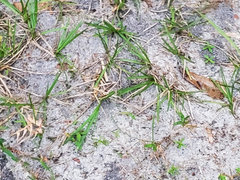


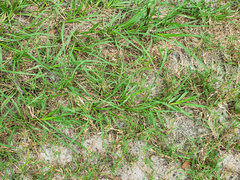





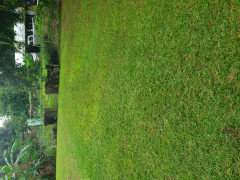
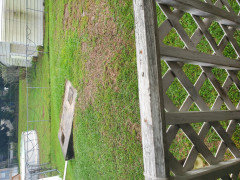
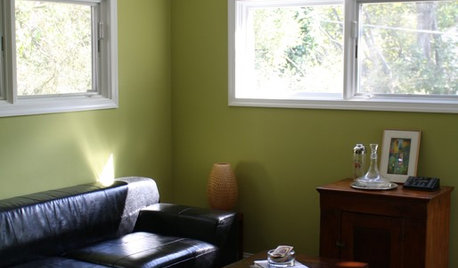



dirtygardener